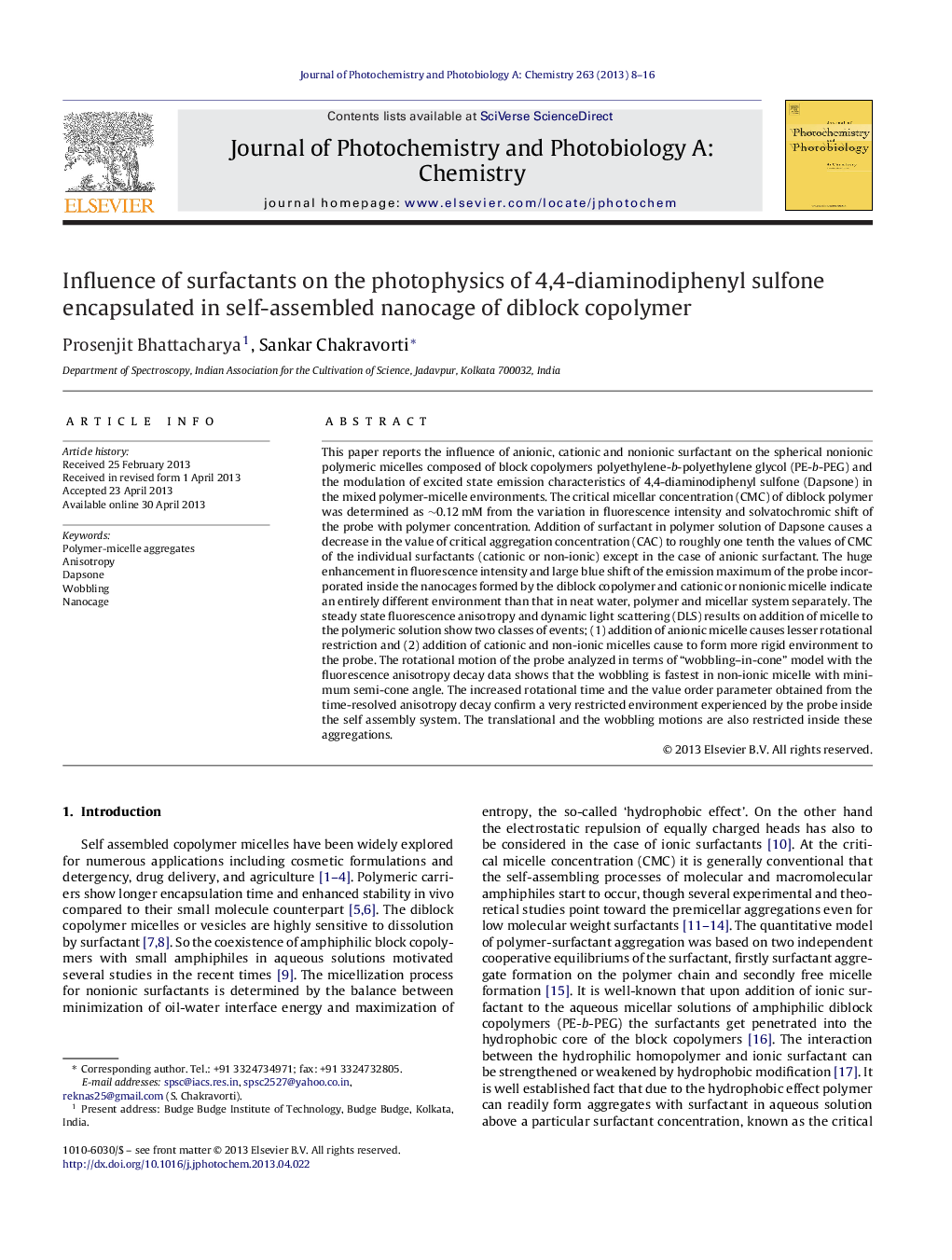| Article ID | Journal | Published Year | Pages | File Type |
|---|---|---|---|---|
| 27023 | Journal of Photochemistry and Photobiology A: Chemistry | 2013 | 9 Pages |
•Influence of cationic and non-ionic micelles drastically reduces the critical aggregation constant but not in the case of anionic micelle.•Addition of anionic micelle causes the probe to move toward the edge of the aggregation due to a possible disruption.•Further addition of polymer in polymer-anionic micelle gains rigidness with probe position unchanged.•Wobbling motion of the whole polymer-micelle assembly is fastest in non-ionic micelle with minimum semi-cone angle.
This paper reports the influence of anionic, cationic and nonionic surfactant on the spherical nonionic polymeric micelles composed of block copolymers polyethylene-b-polyethylene glycol (PE-b-PEG) and the modulation of excited state emission characteristics of 4,4-diaminodiphenyl sulfone (Dapsone) in the mixed polymer-micelle environments. The critical micellar concentration (CMC) of diblock polymer was determined as ~0.12 mM from the variation in fluorescence intensity and solvatochromic shift of the probe with polymer concentration. Addition of surfactant in polymer solution of Dapsone causes a decrease in the value of critical aggregation concentration (CAC) to roughly one tenth the values of CMC of the individual surfactants (cationic or non-ionic) except in the case of anionic surfactant. The huge enhancement in fluorescence intensity and large blue shift of the emission maximum of the probe incorporated inside the nanocages formed by the diblock copolymer and cationic or nonionic micelle indicate an entirely different environment than that in neat water, polymer and micellar system separately. The steady state fluorescence anisotropy and dynamic light scattering (DLS) results on addition of micelle to the polymeric solution show two classes of events; (1) addition of anionic micelle causes lesser rotational restriction and (2) addition of cationic and non-ionic micelles cause to form more rigid environment to the probe. The rotational motion of the probe analyzed in terms of “wobbling–in-cone” model with the fluorescence anisotropy decay data shows that the wobbling is fastest in non-ionic micelle with minimum semi-cone angle. The increased rotational time and the value order parameter obtained from the time-resolved anisotropy decay confirm a very restricted environment experienced by the probe inside the self assembly system. The translational and the wobbling motions are also restricted inside these aggregations.
Graphical abstractFigure optionsDownload full-size imageDownload as PowerPoint slide
